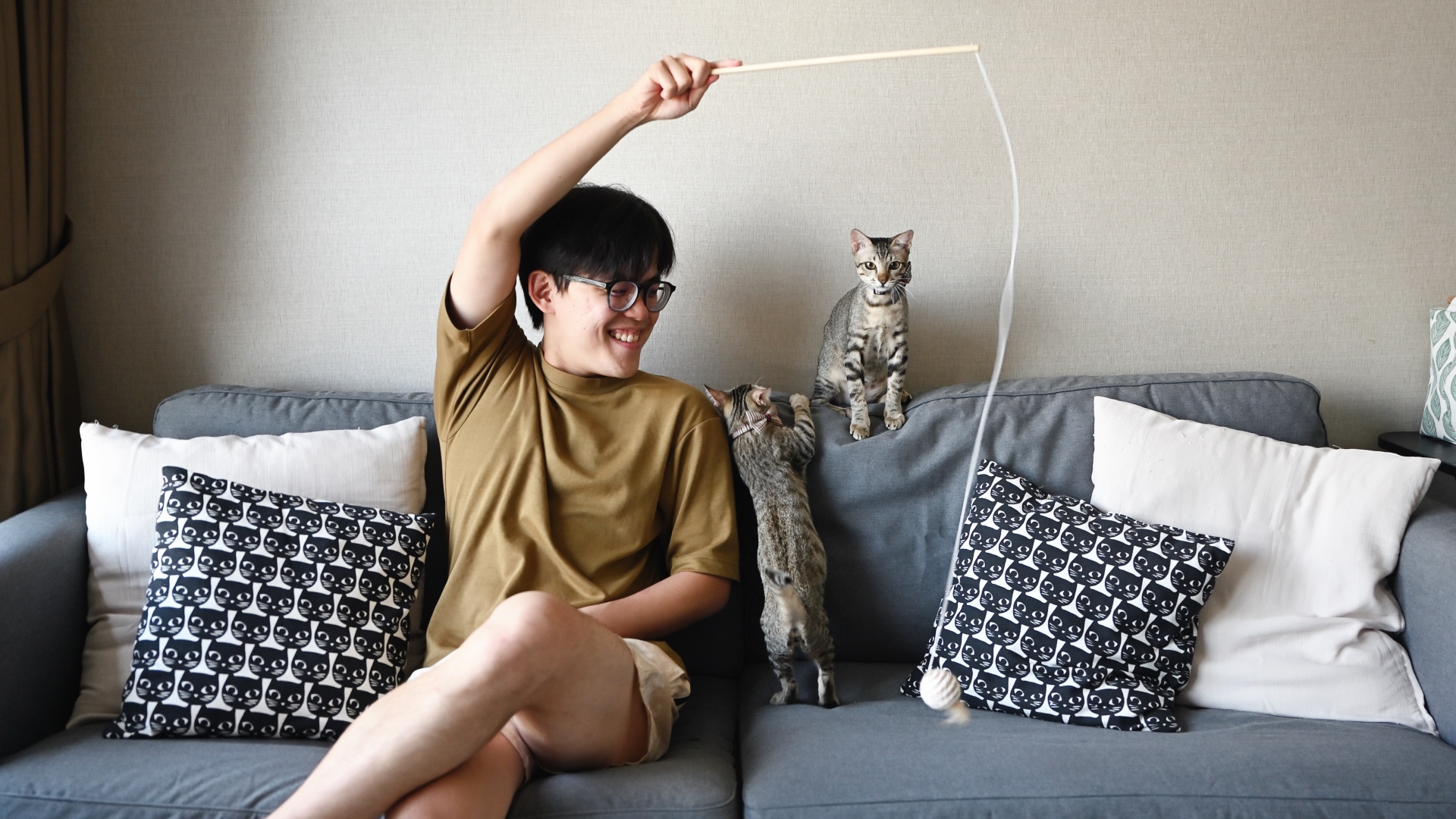Boost your cat’s happiness with these five play tips from a vet technician
Ensure your feline friend stays mentally and physically fit, with these simple play tips from an expert

Alongside nutritious meals and plenty of love and affection, daily play sessions are the key to your cat's happiness — not to mention their overall physical and mental health and wellbeing.
According to registered vet technician and certified cat behavior consultant, Tabitha Kucera, learning how to play with a cat correctly can help prevent aggression, boredom, and stress.
"Exercising your cat's prey drive with interactive and solo play is a crucial part of your cat's development and contributes greatly to their quality of life. It provides exercise and mental and physical stimulation.
It also allows your cat to express their natural behavior and provides predatory outlets, reduces boredom, helps with weight management, and bonds you and your cat closer to each other."
But as it turns out, not all cat play is created equal. To help your feline friend get the maximum benefits out of their play sessions, Kucera has shared a handy post to Instagram in which she reveals her top tips for playing with your cat. Here's what she had to say...
A post shared by Tabitha RVT, Cat & Dog Trainer (@chirrupsandchatter)
A photo posted by on
1. Simulate prey: "When using an interactive toy, such as a feather wand, or a mouse on a string, move the toy like the prey it's supposed to represent," says Kucera. "When birds aren't flying, for example, they hop around on the ground and then flutter off to land somewhere else.
Mice and other rodents scurry with sudden starts and stops, keeping to corners and other hidden places. If you're really serious about learning to play like prey, watch them at work in your yard or study videos of their behavior."
PetsRadar Newsletter
Get the best advice, tips and top tech for your beloved Pets
2. Use a wand toy: "Avoid using your hands so that your cat's learn appropriate play." This will help prevent aggressive behavior being directed at you both during, and outside of, your play sessions, such as biting and scratching.
3. Let your cat 'catch' their prey during the play session: "Make sure your cat gets to catch and bite the toy frequently, otherwise they will get frustrated and either stop playing with you or act out in response to their unfulfilled urges," Kucera explains.
4. Play with your cat daily: Doing this is really important for their mental and physical health and wellbeing. Kucera recommends always using toys that simulate the unpredictable movements of prey. If you're not always able to spend time playing with your feline friend each day, then the next best thing is to invest in some automated cat toys or interactive cat toys that they can play with independently.
5. Gradually wind down each play session: "For example, towards the end of a session, have the bird toy start to slow down and 'die'," Kucera recommends. "End each session with a small treat. Remember, for cats when they're hunting, it includes staring, stalking, pouncing, killing, and eating. Giving them a small treat at the end of the session simulates them eating their kill."

Kathryn is a freelance writer who has been a member of the PetsRadar family since it launched in 2020. Highly experienced in her field, she's driven by a desire to provide pet parents with accurate, timely, and informative content that enables them to provide their fur friends with everything they need to thrive. Kathryn works closely with vets and trainers to ensure all articles offer the most up-to-date information across a range of pet-related fields, from insights into health and behavior issues to tips on products and training. When she’s not busy crafting the perfect sentence for her features, buying guides and news pieces, she can be found hanging out with her family (which includes one super sassy cat), drinking copious amounts of Jasmine tea and reading all the books.
